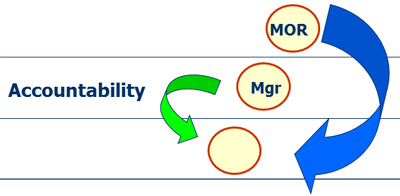“That’s the problem with our results based system,” Audrey explained. “As his manager, I have to sit around and wait for the results to come in. If they don’t, I am supposed to be quick and decisive. Chop him off at the knees.”
“You sound like it doesn’t work out sometimes.”
“More than sometimes. There are almost always outside circumstances that impact results. I can have someone doing a great job, but some circumstance spoils the party. Even though they were doing a great job, they get a (2) on their performance appraisal.
“Or even worse,” Audrey continued. “I have a supervisor, who is really doing a lousy job, but they get lucky, the goal gets achieved, so they score a (5).”
“And?” I prodded.
“And, now my boss says we have to cut overhead, somebody has to go. I have to pick the lousy supervisor with the (5) and let go the good supervisor with a (2).”

